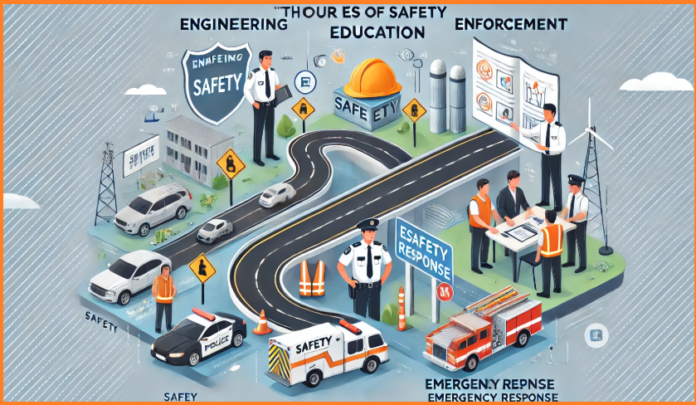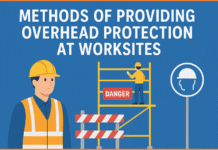Accident prevention is a crucial aspect of workplace and public safety. A well-established model known as the Three Es of Safety—Engineering, Education, and Enforcement—has long been used to mitigate hazards and reduce the risk of accidents. However, a fourth E, Enthusiasm, has been increasingly recognized as a key component in fostering a culture of safety. Together, these Four Es form a comprehensive framework for effective accident prevention.
Contents
1. Engineering: Preventing Unsafe Conditions
Engineering plays a fundamental role in accident prevention by eliminating or reducing unsafe conditions. This aspect involves designing safer equipment, processes, and environments to minimize potential hazards. For example, ergonomic improvements in workstations, fail-safe mechanisms in machinery, and enhanced protective barriers contribute to reducing risks. Engineering also extends to human factors and behavioral safety, ensuring that designs account for human limitations and interactions.
2. Education: Addressing Unsafe Acts
Education is essential for instilling safety awareness and knowledge. Training programs for engineers, supervisors, and workers help them recognize hazards and implement appropriate control measures. Safety education encompasses various aspects, including:
- Identifying and understanding workplace hazards.
- Learning safe operating procedures and emergency response protocols.
- Staying updated on safety policies, regulations, and best practices.
By educating all stakeholders, organizations can reduce unsafe acts and promote a proactive approach to hazard identification and mitigation.
3. Enforcement: Ensuring Compliance
Enforcement is the mechanism that ensures safety measures are implemented and followed. This includes adherence to laws, regulations, standards, and workplace policies. Enforcement strategies involve:
- Conducting regular safety audits and inspections.
- Implementing disciplinary measures for safety violations.
- Reinforcing compliance with safety rules through supervision and accountability.
A strong enforcement strategy creates a structured and disciplined safety culture, reducing the likelihood of negligence or oversight.
4. Enthusiasm: Motivating Safety Commitment
The fourth E, Enthusiasm, emphasizes the importance of motivation and engagement in safety practices. A positive safety culture thrives when employees and management actively participate in safety initiatives. Enthusiasm can be fostered through:
- Leadership commitment to safety.
- Recognition and rewards for safe behaviors.
- Encouraging employee involvement in safety programs and decision-making.
By instilling enthusiasm, organizations can ensure that safety is not just a regulatory requirement but a shared responsibility embraced by everyone.
The Four Es of Safety—Engineering, Education, Enforcement, and Enthusiasm—offer a holistic approach to accident prevention. While engineering addresses unsafe conditions, education targets unsafe acts, enforcement ensures compliance, and enthusiasm drives engagement. By integrating all four elements, organizations can create a robust safety culture that minimizes risks and enhances overall well-being.





